Contents
The Post-Workout Window: Your Recovery Kickstart
Let’s be blunt: when you’re 30–40 km into a Gold Coast marathon long run or you’ve just finished a 5×5 minute VO₂max track set in Melbourne, the post-session hour matters. That 30–60 minute window after a hard session is where a targeted protein shake gives you the highest return for the lowest hassle.
What to do: after any session that causes real muscular strain — long runs/rides (90+ minutes), hard intervals, or strength sessions — take a shake delivering 20–30 g protein plus some carbohydrates (approx 30–50 g) within 30–60 minutes.
Why it works: intense endurance work increases muscle protein breakdown and depletes glycogen. Protein supplies essential amino acids (especially leucine) to stimulate muscle protein synthesis, while carbs refill liver and muscle glycogen — together they speed repair and reduce next-day soreness.
How to apply (Aussie example): after a 3–4 hour Ironman-specific ride for Ironman Cairns preparation, mix UCAN Energy + Protein (or a whey-based shake with 30 g protein + 40 g carbs) and consume at the roadside or immediately on getting home. Then follow with a solid meal within 2 hours. If you’ve trained twice that day (AM long run / PM swim), don’t skip this — it’s the bridge between sessions.
This decision tree gives you a simple way to think about it: if you’ve just finished a hard session, it’s time for a shake. Easy day? A good meal will do the trick.

The key is prioritisation. Use protein shakes after the workouts that matter most and use whole-food meals the rest of the time. For a quick primer on why shakes help, see our guide on what protein shakes do for the body.
Quick Guide to Protein Shake Timing
Practical table for a busy athlete — when a shake is the right tool.
| Training Session Type | Optimal Protein Shake Window | Main Recovery Goal |
|---|---|---|
| Long Run/Ride (90+ mins) | Within 30–60 minutes post-session | Muscle repair & glycogen replenishment |
| High-Intensity Intervals (VO₂max / Threshold work) | Within 30 minutes post-session | Kickstart muscle protein synthesis |
| Strength / Gym (heavy lower-body) | Within 60 minutes post-session | Repair fibres & promote adaptation |
| Easy Recovery Session / Light spin | Not essential — focus on next meal | General nutrient intake |
Bottom line: the shake is a targeted tool, not a daily crutch. Use it when the session demands priority recovery.
The Truth About the Post-Workout ‘Anabolic Window’
That “30-minute magic window” makes for great headlines, but the evidence is clear: total daily protein matters most for adaptation, not a single rigid minute marker[1]. Still, timing has practical value for athletes with dense training schedules.
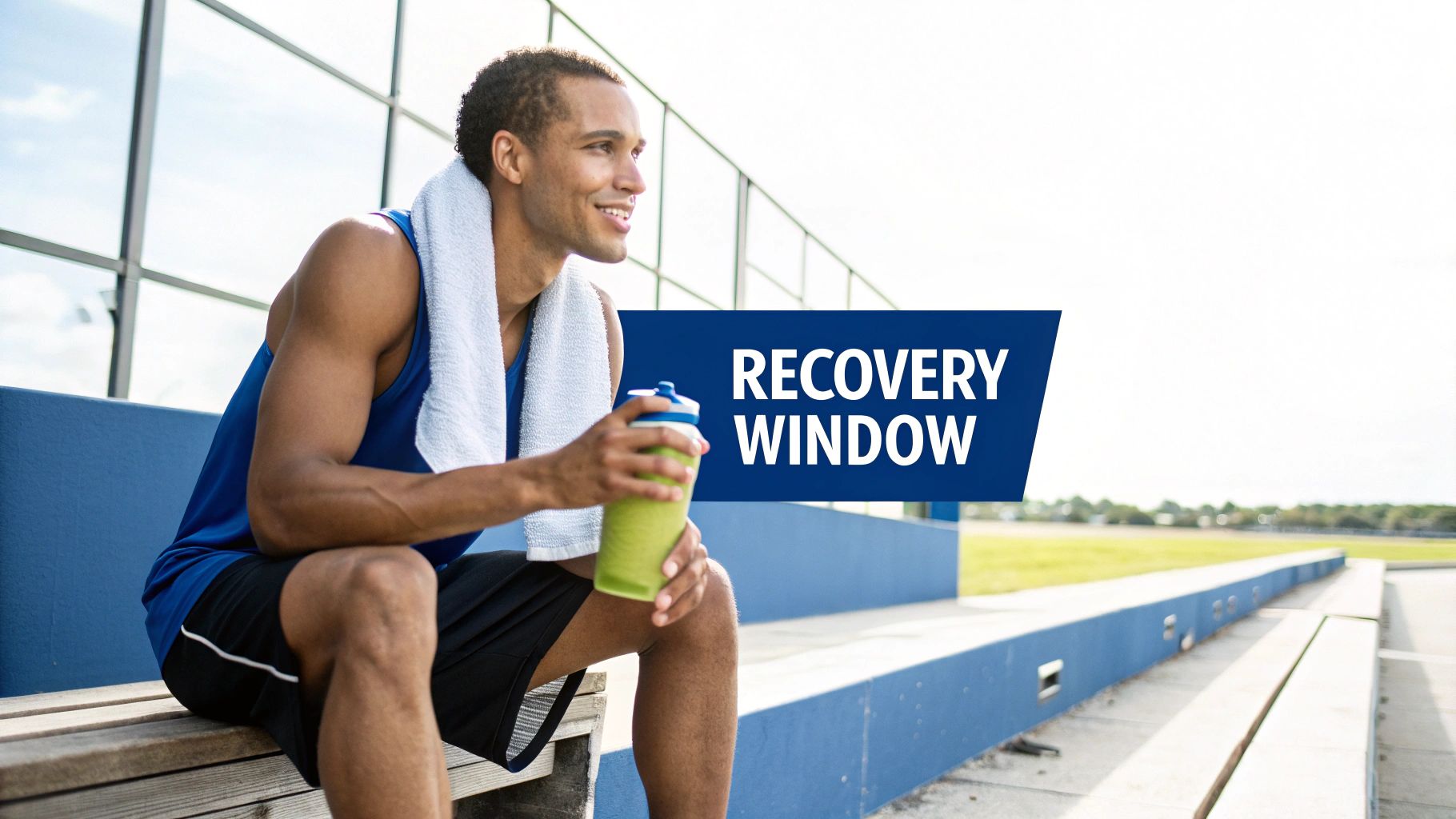
Consistency Over Panic
What to do: hit your daily protein target (1.2–1.6 g/kg bodyweight for endurance athletes in heavy training) and include a concentrated post-key-session shake rather than obsessing over minutes after every easy run.
Why it works: a meta-analysis found that when total protein is sufficient, the narrow timing effect becomes much smaller — but timing still helps when sessions are back-to-back or particularly damaging to muscle tissue[1].
How to apply: set a simple habit: key sessions → shake within 30–60 minutes. On rest days, shift focus to balanced protein-rich meals and one mid-afternoon shake if you struggle to meet targets.
This obsession with timing is a big market driver in Australia’s sports nutrition scene — but use the market language to your advantage: pick products that suit your gut and training (UCAN Energy + Protein for steady-release carbs + protein is a smart fit for long rides and two-a-days).
Why It Still Matters for a Two-a-Day Athlete
It’s less about a magic window and more about practical recovery. The shake is the tool that gets you ready to perform again in just a few hours.
What to do: when you train twice daily (e.g., AM long run / PM quality swim), take a 20–30 g protein shake with 30–50 g carbs within an hour after the AM session and follow with a protein-rich lunch. Repeat post-PM session if needed.
How to apply (case study): morning long run — UCAN Energy + Protein immediately after; light snack at 11:00; swim at 5:00 pm with targeted gel 15–30 minutes before intervals (see 👉 Shop UCAN Energy Gels).
Using Protein Before or During a Workout?
This is an advanced strategy reserved for ultra-long sessions or when you’re specifically trying to blunt muscle breakdown during prolonged catabolic stress.

Why This Actually Works
What to do: for sessions >3 hours, try adding a small protein-containing feed (10–15 g protein combined with carbs) during the session. Start conservatively — only on long training days after gut testing.
Why it works: prolonged exercise increases reliance on amino acids for fuel. Small amounts of protein in-race can blunt net protein breakdown and reduce markers of muscle damage, helping you feel fresher at the finish and recover faster[2].
How to apply: use during training rides longer than 3 hours. Example: every 60–90 minutes, take 60–90 g of UCAN Energy (steady-release carbs) paired with 10–15 g protein (or UCAN Energy + Protein serving). Don’t try this on race day unless you’ve practised it in training.
Coach’s Tip: treat in-session protein as an insurance policy for muscle. If your session hits the three-hour mark, your body will start scavenging — a small protein feed reduces that risk.
How to Apply This Strategy — Practical Guide
- Test during long training rides/runs only — start with 10 g protein + 30 g carbs per hour in the final third of a 4–5 hour session.
- Monitor GI tolerance — if you feel bloated or nauseous, reduce the protein or switch to hydrolysed/peptide forms.
- Follow up with a 20–30 g protein shake within 60 minutes post-session to lock in recovery.
Other Smart Times to Use a Protein Shake
Post-session shakes are essential, but other moments in the day are high-value opportunities within an effective protein shake schedule.
As a Strategic Snack Between Meals
What to do: use a 20–25 g protein shake mid-afternoon (around 3 pm) on heavy days to stabilise blood sugar and stop energy dips before your PM session.
Why it works: a protein-rich snack maintains amino acid availability for repair and reduces the temptation to grab quick, low-quality carbs that don’t help recovery.
How to apply: if you’re balancing work and training, prepare a portable shake (or powdered serving) to take to training or work. UCAN Energy + Protein can be used here when you need carbs and protein together.
Fuelling Repair While You Sleep
What to do: during heavy training blocks, have a slow-digesting protein (casein or a blend) before bed — 30–40 g is a practical range.
Why it works: overnight is the longest fasting period; slow-release proteins supply amino acids steadily to support overnight muscle repair and can reduce morning stiffness.
How to apply (Aussie race prep): in the week before Sydney or Melbourne marathons when mileage is still significant but intensity drops, include a pre-bed casein-style shake three nights a week to support adaptation across high-volume weeks.
How to Choose the Right Protein Powder
Endurance athletes have different needs to strength athletes. Prioritise digestibility, amino acid profile (leucine content) and how the product sits with your gut on long sessions.
The Main Players in Protein
- Whey Protein: quick-digesting; ideal immediately post-session. Whey isolate reduces lactose load for sensitive stomachs.
- Casein Protein: slow-digesting; ideal pre-bed to support overnight repair.
- Plant-Based Proteins: pea/soy/rice blends can offer complete amino acid profiles — great for dairy-intolerant athletes.
Protein type alone isn’t enough — pair protein with carbohydrates after hard sessions. A 3:1 carb:protein ratio is a practical starting point for long endurance work.
We designed UCAN Energy + Protein specifically to solve the endurance problem: steady-release carbs to avoid insulin spikes plus quality protein for repair. For pre-interval fueling, UCAN Energy Gels are effective 15–30 minutes prior to short, high-power sets. (👉 Shop UCAN Energy + Protein)
Your Protein Timing Questions Answered
How much protein should I have after a workout?
Answer: aim for 20–30 g of high-quality protein within 60 minutes of a key session. For heavier athletes or those doing strength + endurance in the same session, up to 40 g is reasonable.
Should I take protein shakes on rest days?
Answer: yes — but the urgency is lower. Use a mid-morning or mid-afternoon shake to hit daily protein targets (total daily intake is what drives adaptation). On easy days focus on whole-foods, but a shake is a safe, consistent way to meet targets.
Is whey protein the only option?
Answer: absolutely not. Whey is fast and leucine-rich, which makes it ideal post-workout. But if you’re dairy-sensitive or vegan, modern plant blends work well. Casein is useful at night. Choose what your gut tolerates during training.
FAQ
- Q: What is a simple weekly protein shake schedule for a 10-week marathon build?
- A: Key rule — post-quality sessions (intervals, long runs) : shake within 30–60 minutes. Example week: Mon (rest) — no post-shake; Tue (tempo) — 25 g protein + 40 g carbs post-run; Wed (easy) — whole-foods; Thu (track) — 25–30 g protein within 30 minutes; Sat (long run) — UCAN Energy + Protein immediately post-run; Sun (recovery ride) — light meal. Adjust volume by bodyweight and total daily protein targets (1.2–1.6 g/kg).
- Q: Can I mix protein with my regular on-bike feed?
- A: Yes — for sessions >3 hours, mix small protein doses (10–15 g) with your carb feed and trial in training first. Use easily digestible protein sources (hydrolysed whey or peptide blends) to reduce GI risk.
- Q: Will a protein shake make me bulky?
- A: No. Endurance athletes using 20–30 g shakes for recovery will not “bulk up.” Protein supports repair and resilience — it reduces soreness and improves training quality without adding unnecessary mass.
References
[1] Schoenfeld BJ, Aragon AA, Krieger JW. The effect of protein timing on muscle strength and hypertrophy: a meta-analysis. Journal of the International Society of Sports Nutrition. 2013;10(53).
[2] Saunders MJ, Moore RW, Kies AK, Luden ND, Pratt CA. Carbohydrate and protein hydrolysate coingestion’s effect on recovery after interval training. Int J Sport Nutr Exerc Metab. 2007;17(6):555-573.
👉 Shop UCAN Energy + Protein to Nail Your Recovery

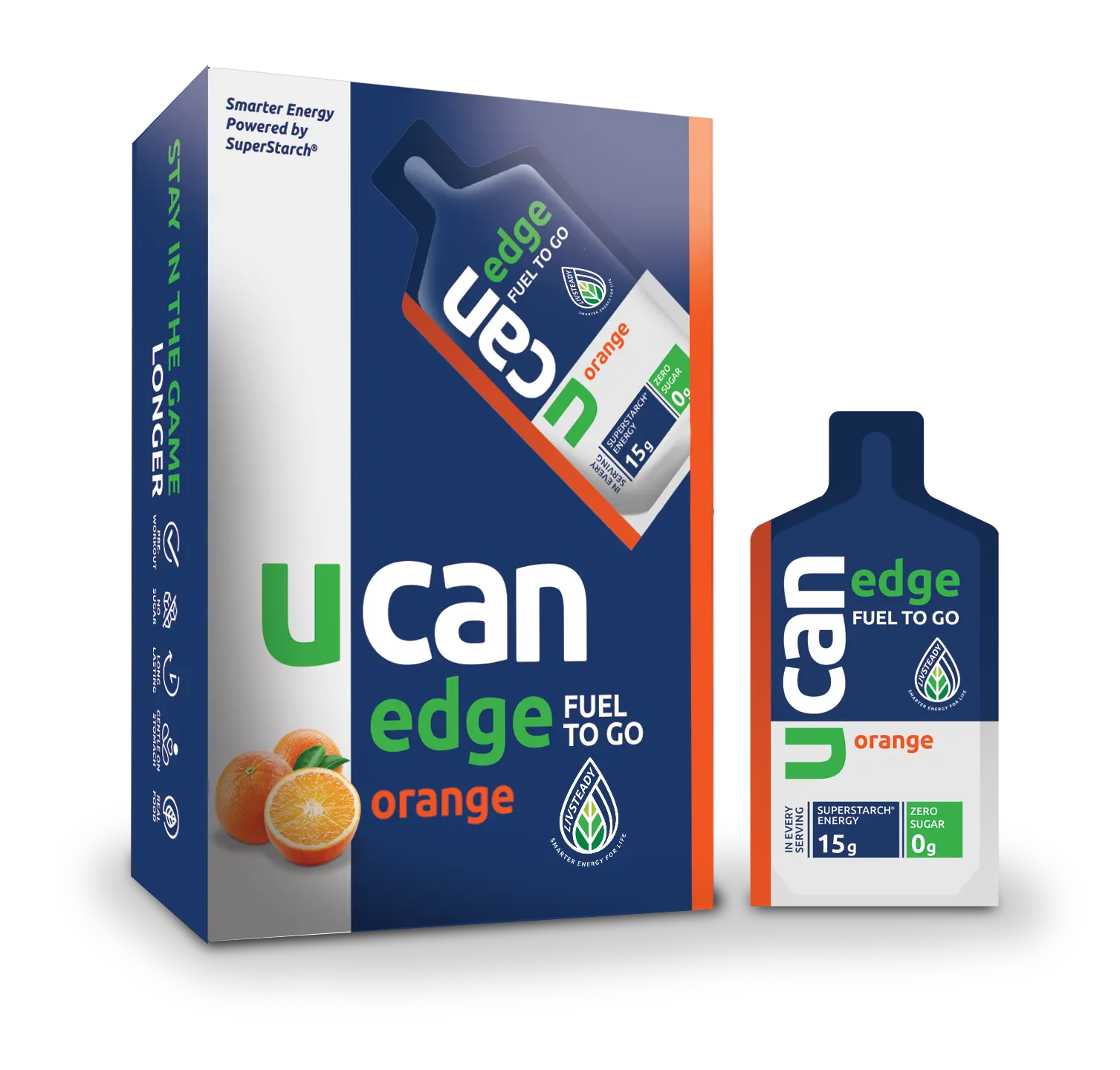


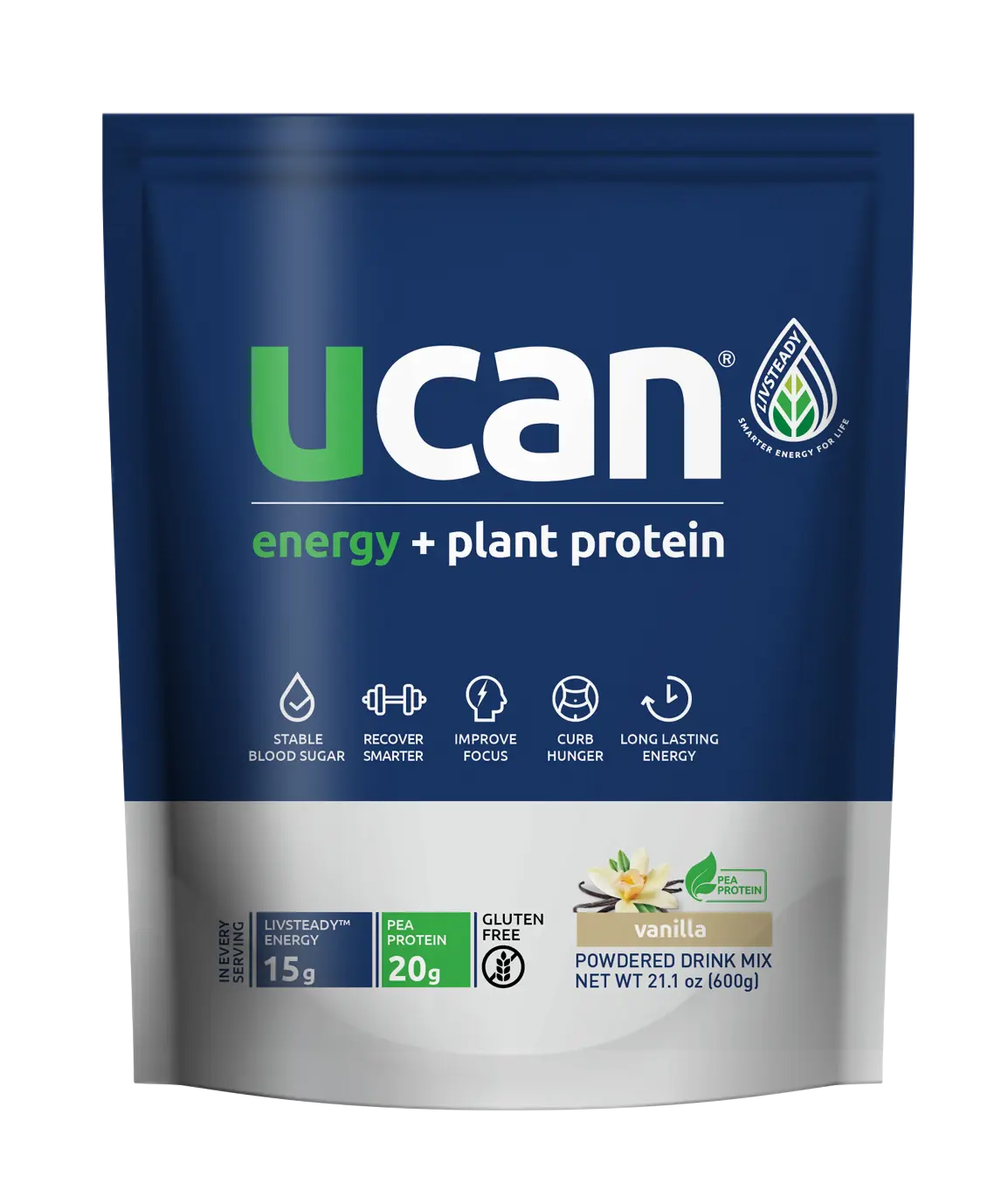

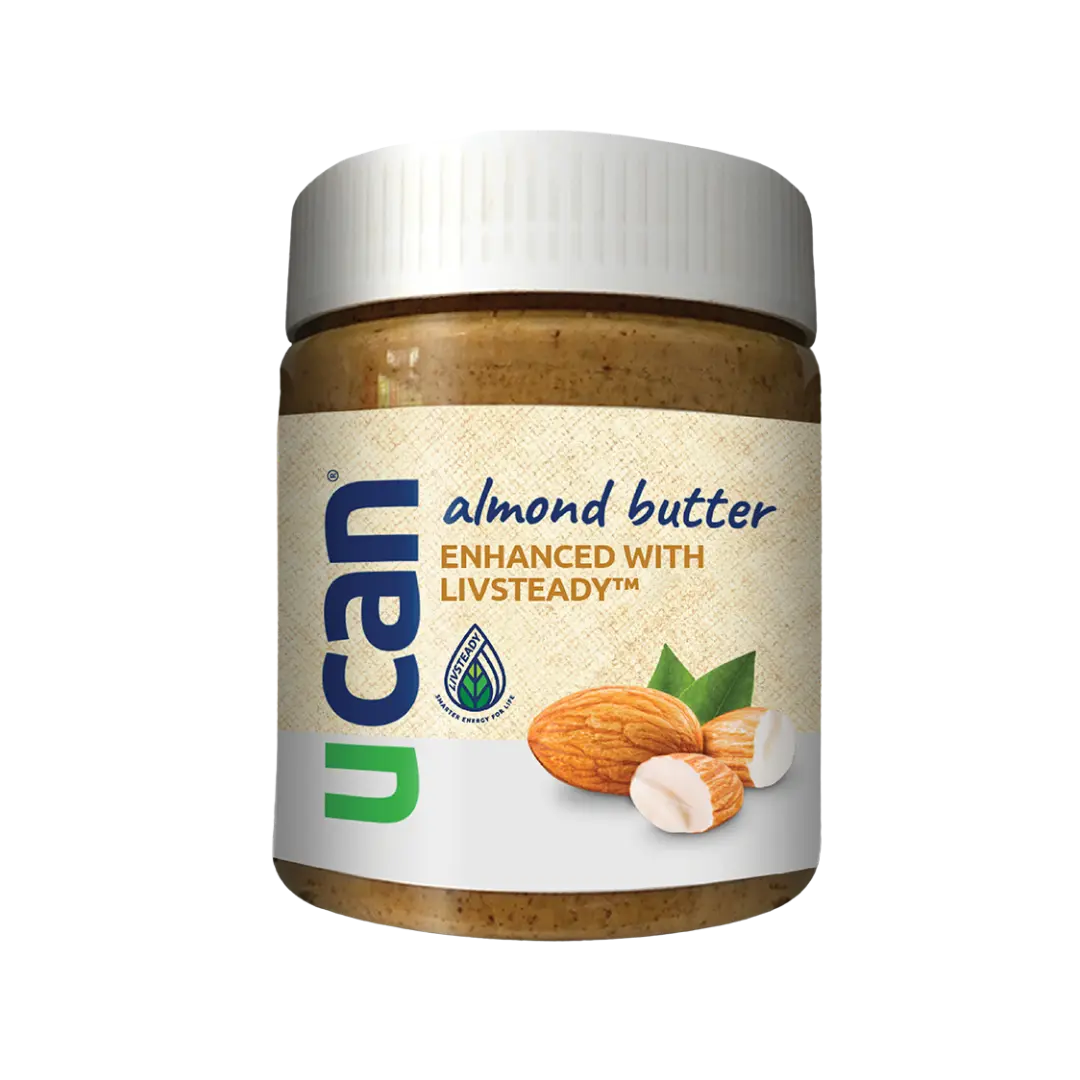
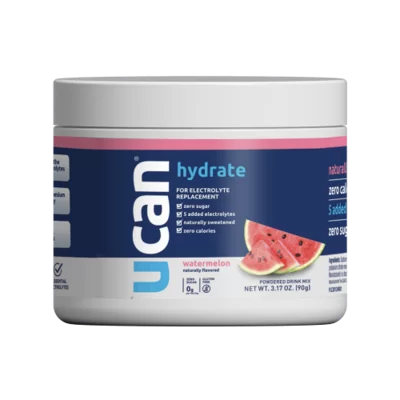
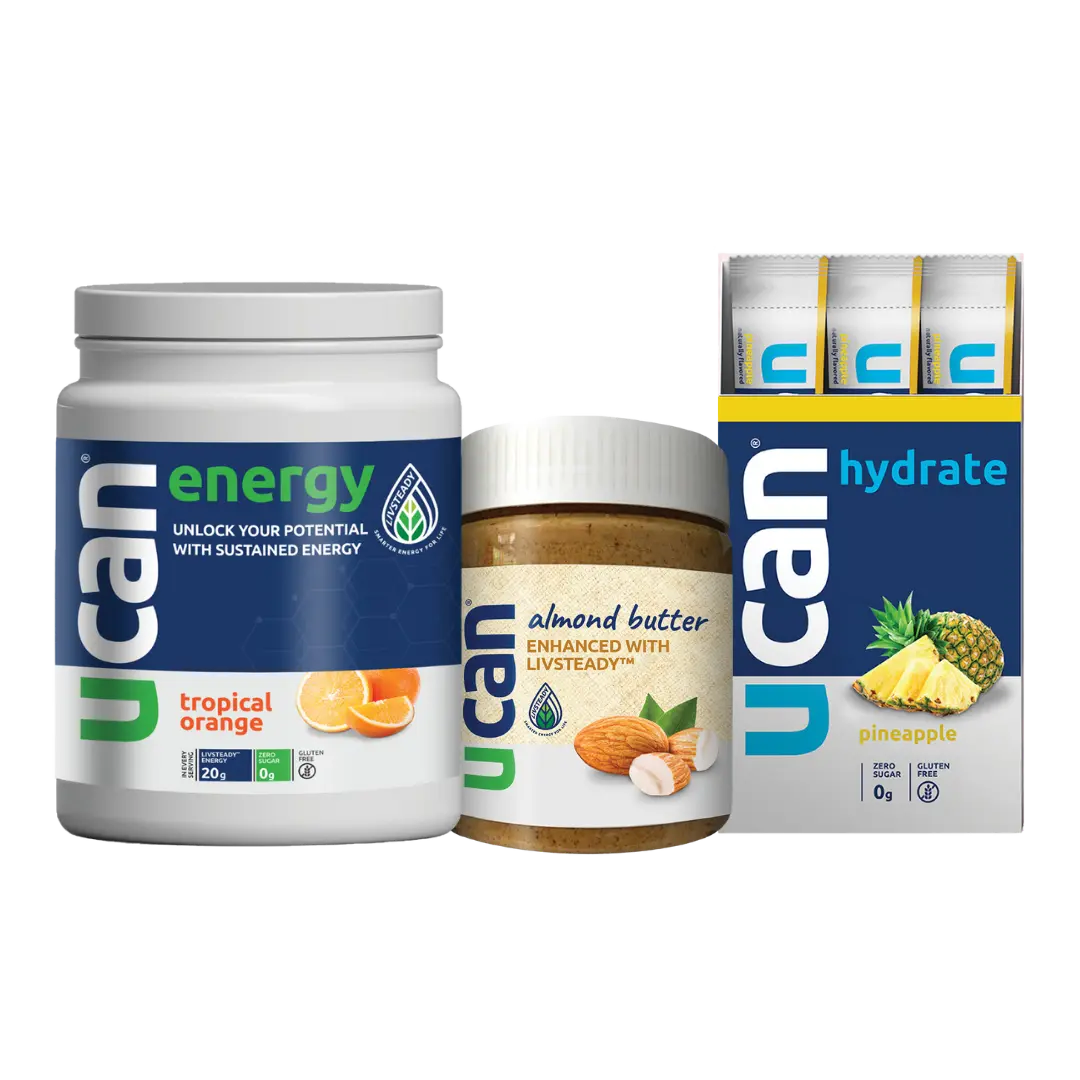

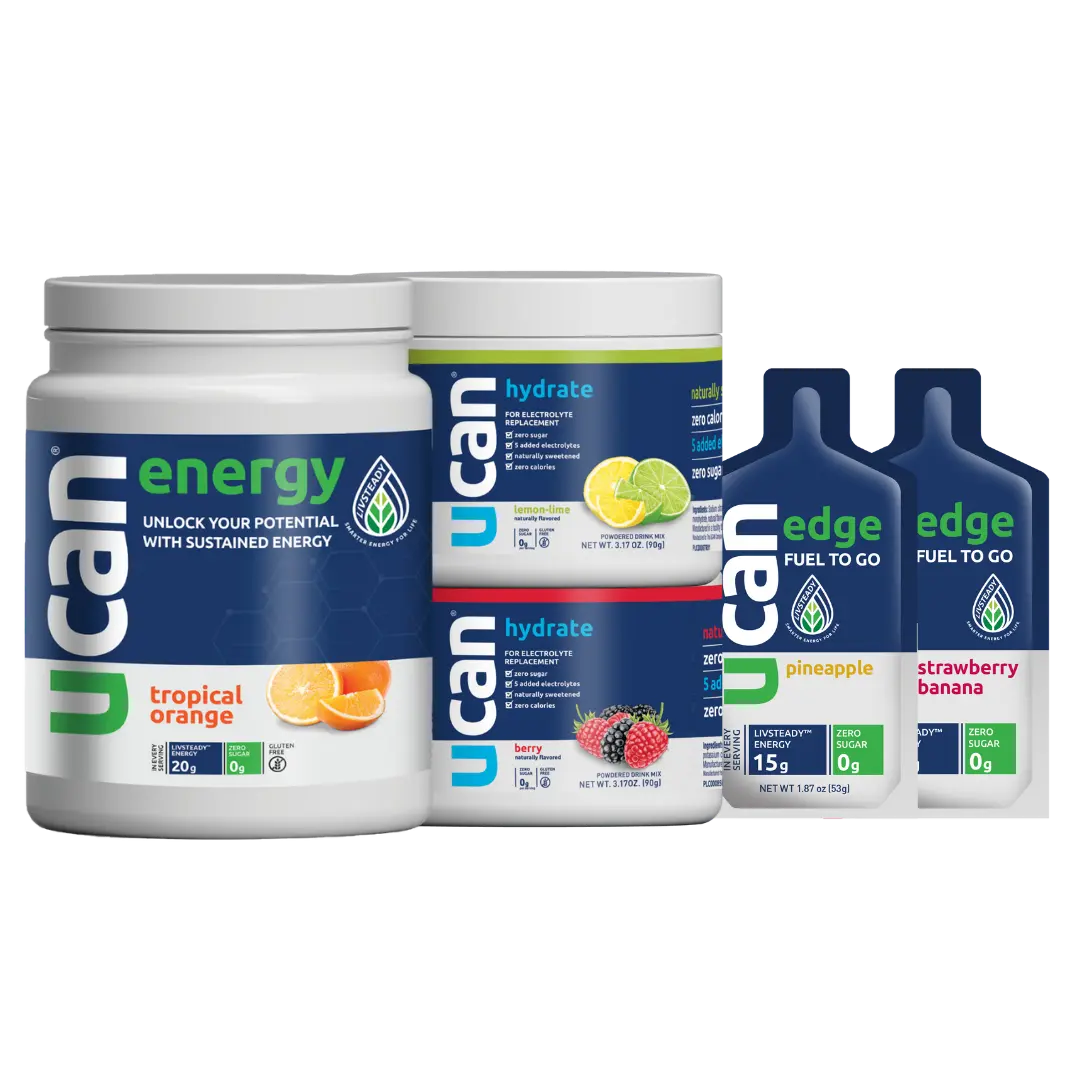

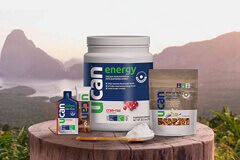
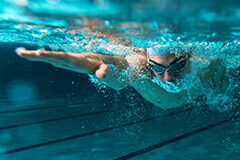
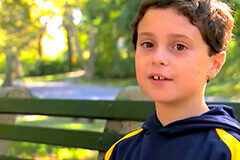
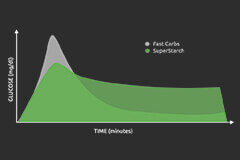

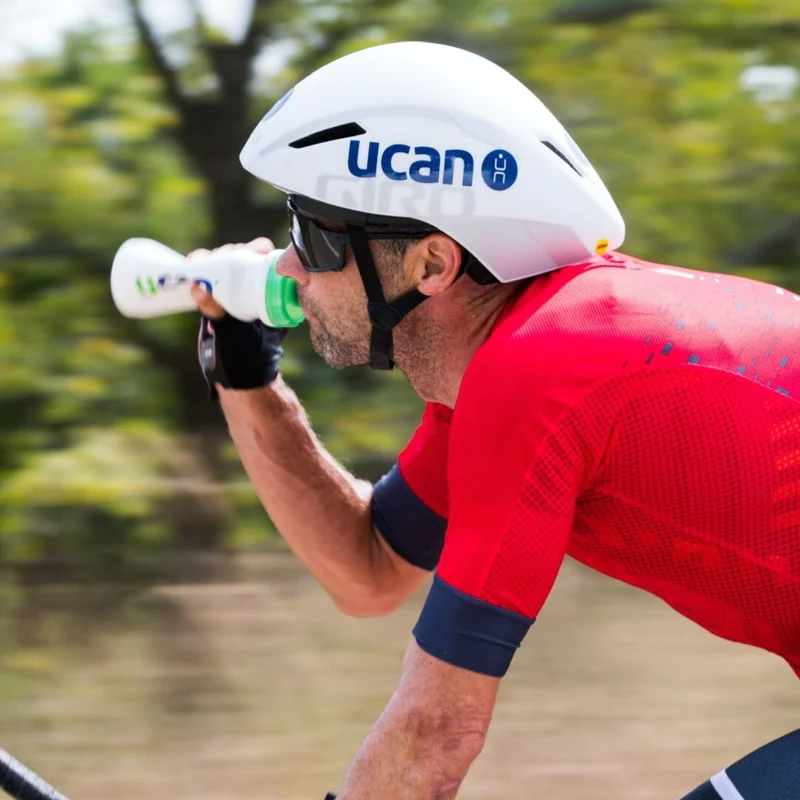


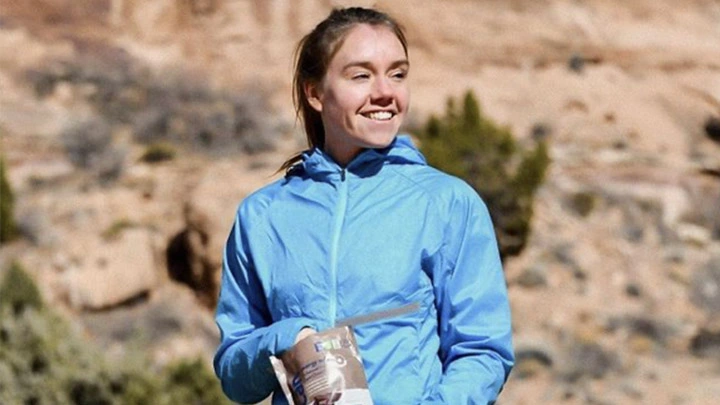


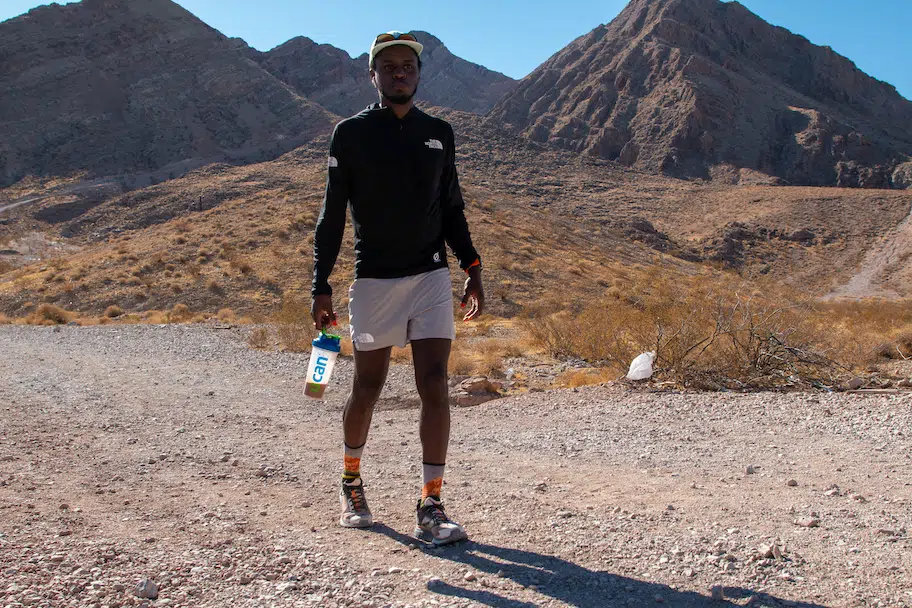




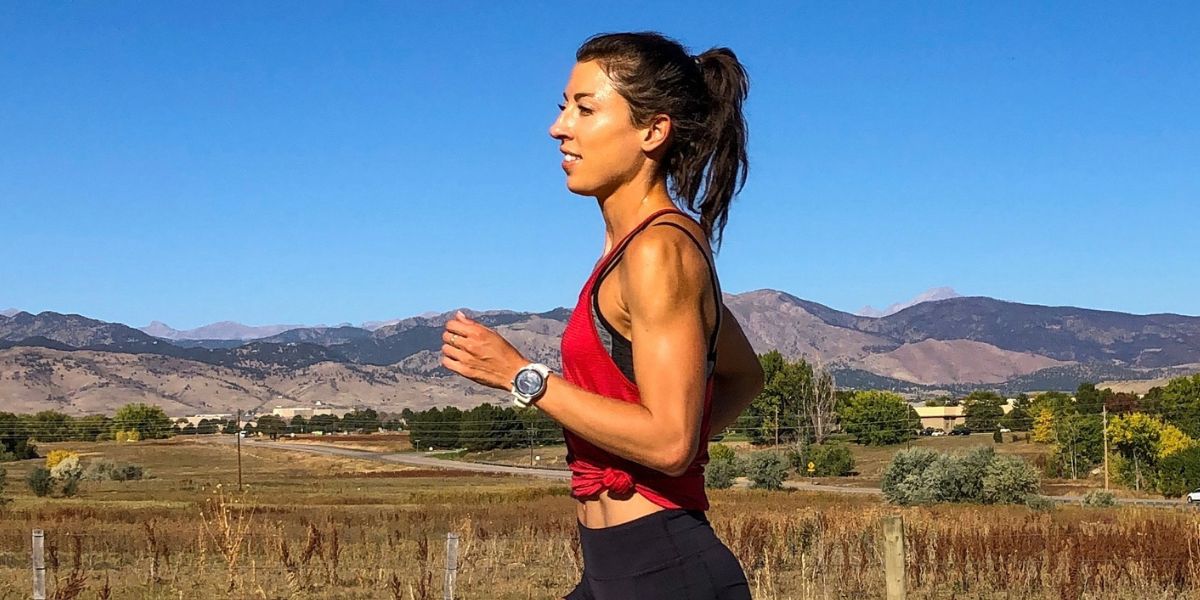




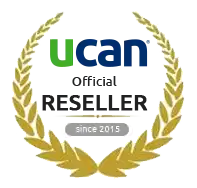


Comments are closed